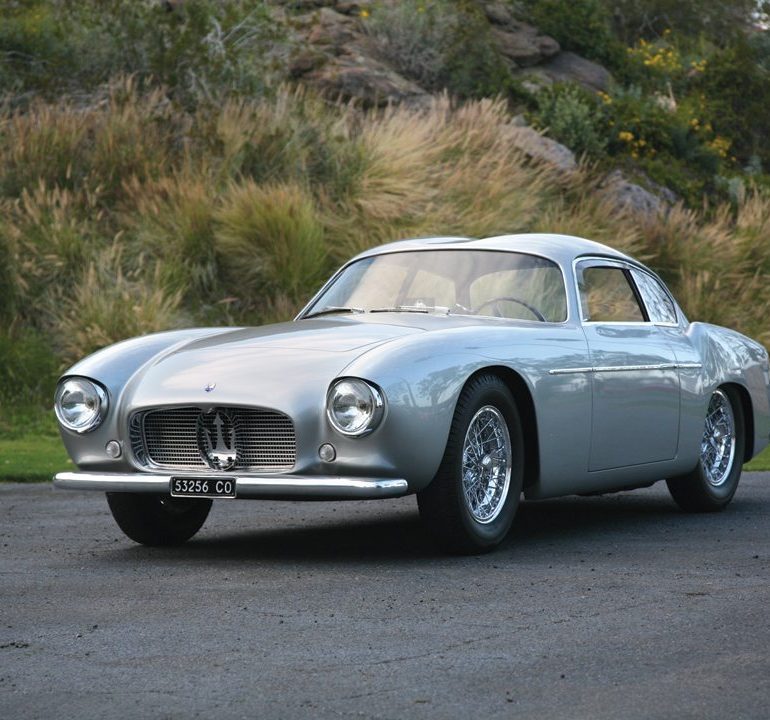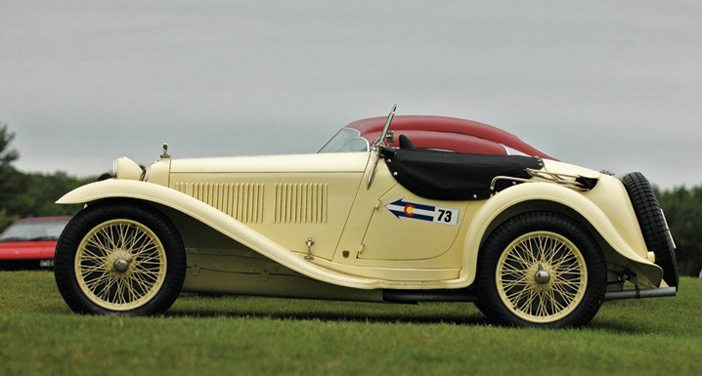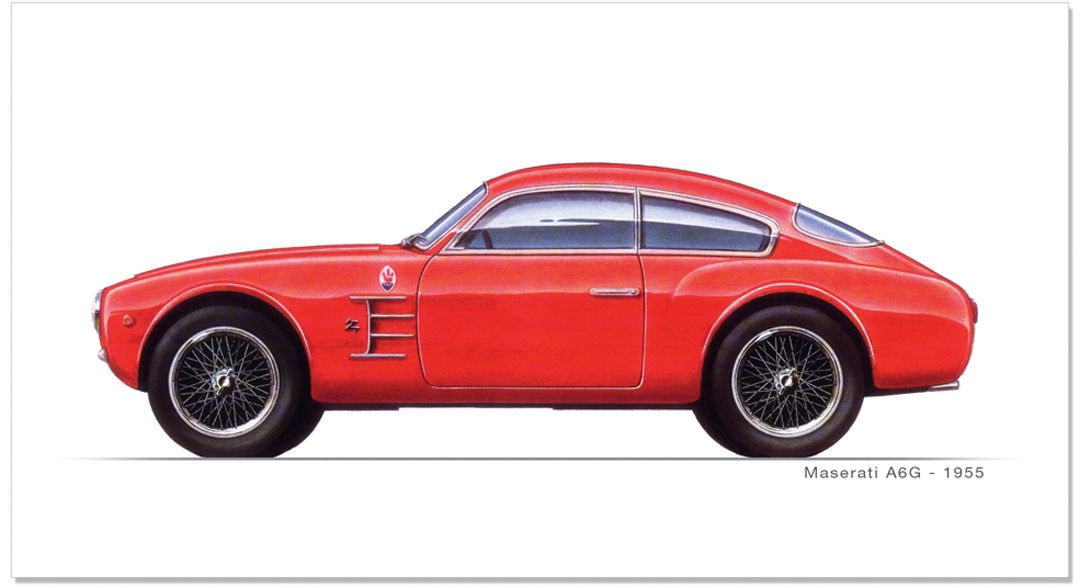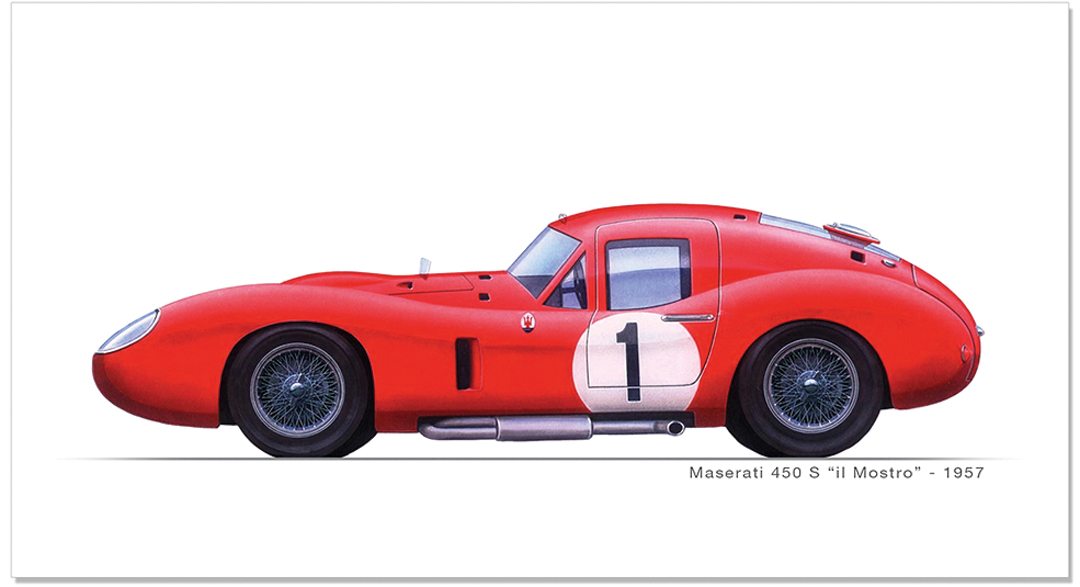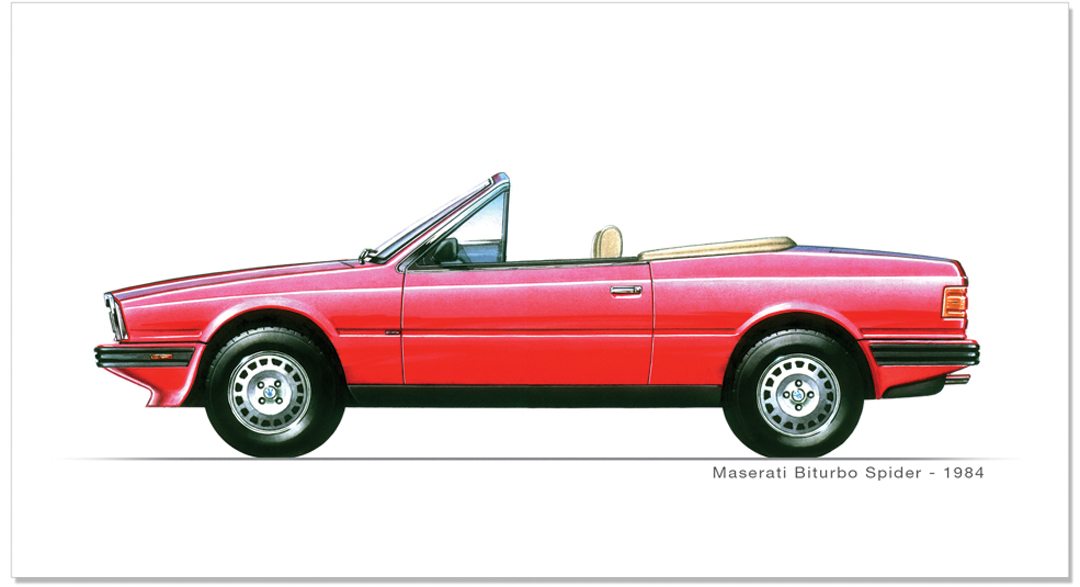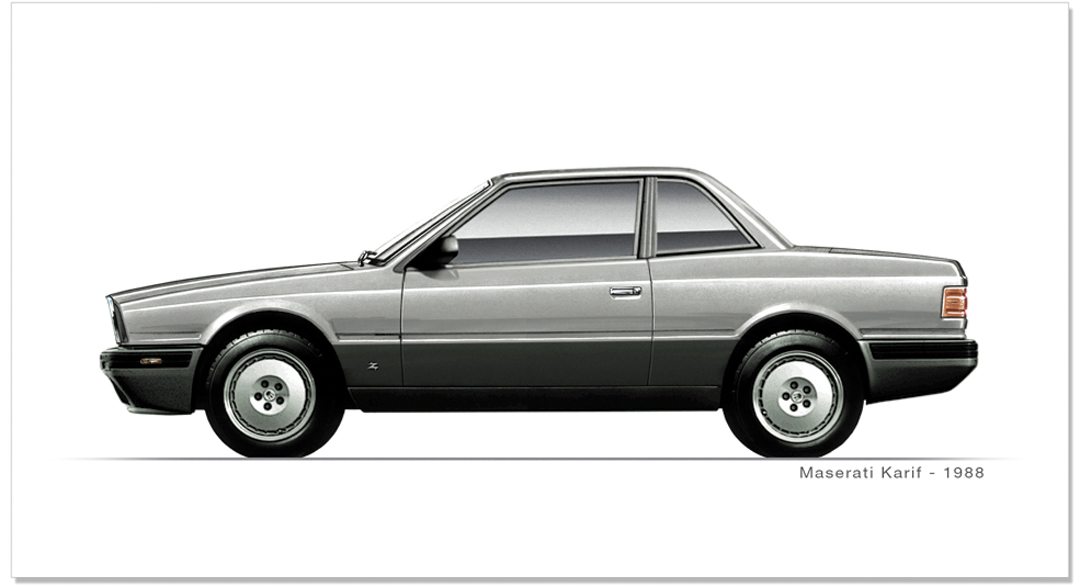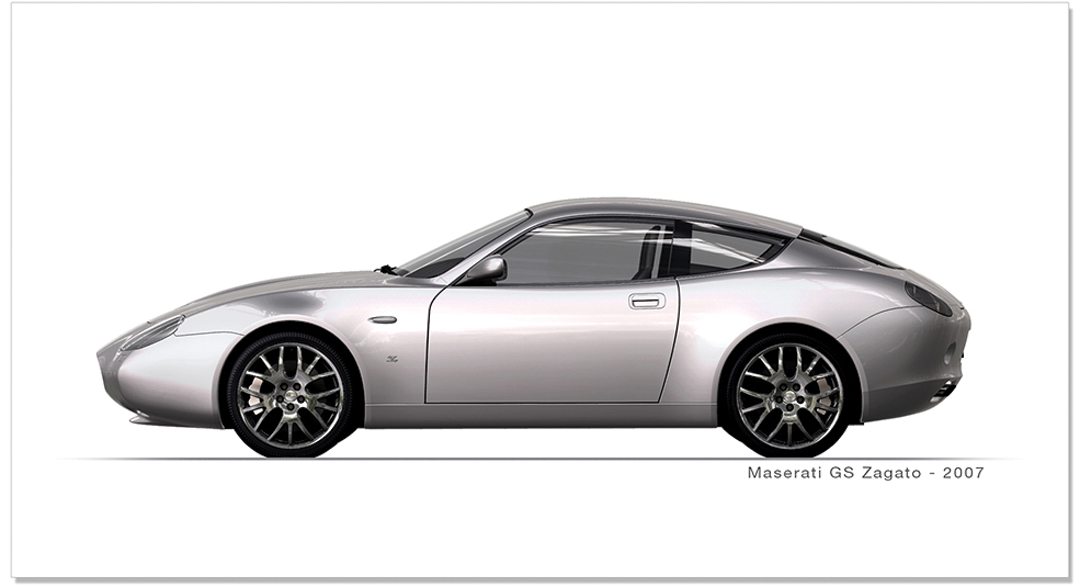
After World War I, Alfieri Maserati (one of six Maserati brothers) took a position as a consulting engineer with Diatto. In this position, Maserati began developing racing cars for Diatto, including a new 2-liter, supercharged, inline, 8-cylinder Grand Prix machine for the 1925 season. Unfortunately, Diatto fell on hard financial times before the car could realize its full potential, and as partial compensation for his efforts, Maserati retained the 2-liter Diatto and the rights to its design. Thus was born the Maserati brand.
At this same time, in Milan, Ugo Zagato was ramping up his carrozzeria business. Founded in 1919, Zagato left a position with aircraft manufacturer Officine Aeronautiche Pomilio to open his own coachbuilding business devoted to the construction and repair of both airplanes and automobiles. With his aeronautical experience, Zagato felt that he could construct strong automotive bodies that were also much more lightweight than what was being built at the time.
Zagato’s stock quickly began to rise when Alfa Romeo commissioned him to construct a lightweight body for its 1921 G1. By 1925, Zagato was asked to create a body for the Alfa RM Sport, which led to a collaboration on several of Vittorio Jano’s Alfa Romeos, the following year, including the 6C 1500, RL SS and the RL Torpedo. It was this same year, 1926, that Zagato began an on-and-off relationship with Maserati that would span the next 80 years.
 1929 V4 Sedici Cilindri
1929 V4 Sedici Cilindri
The Maserati Brothers launched their eponymous brand in 1926, with the introduction of the Type 26, a supercharged, 1.5-liter, straight-8 racing car that won its class, in the Targa Florio that year with Alfieri Maserati behind the wheel.
Over the following two years, the Type 26 was developed into a 2-liter version (the Type 26B) and a more refined 1.5-liter version (the 8C-1500). For the 1929 racing season, though, the rules were changed to remove engine capacity limits and instead regulate a racecar’s oil and fuel consumption. As a result, Maserati made a very bold move for such a young company, when it decided to build a “Formula Libre” racecar driven by twin, supercharged, inline 8-cylinder engines, the V4, or Sedici Cilindri.
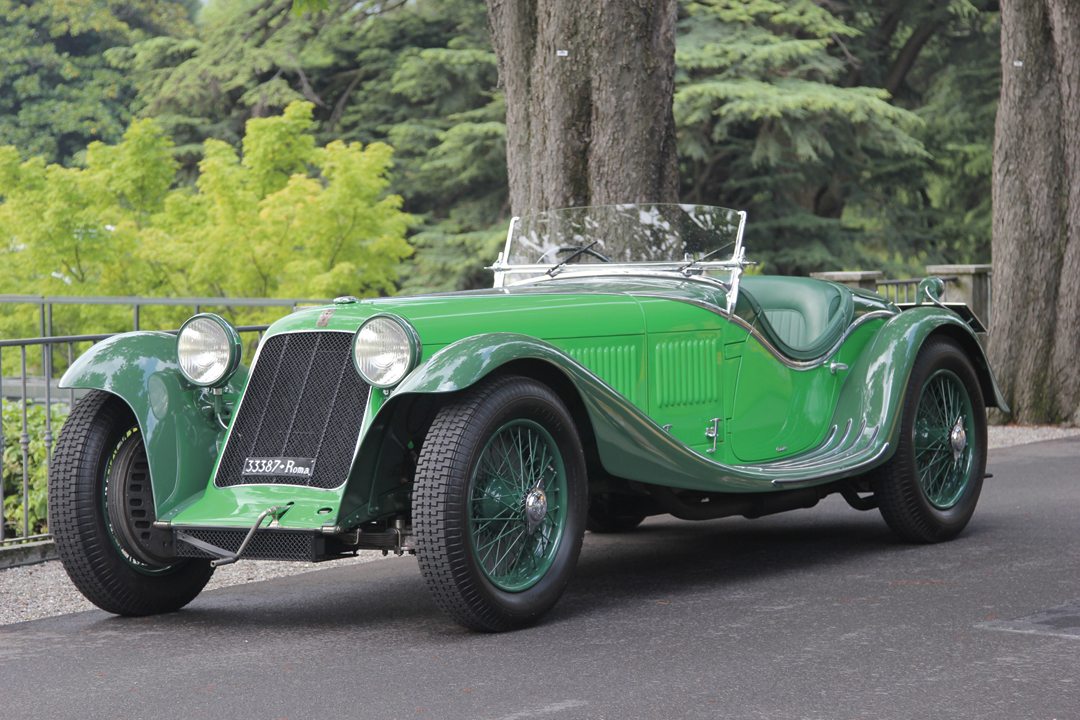
The V4 was, in essence, a Type 26B chassis (#4002) that was elongated to accommodate a 4-liter, V-16 engine that was created by taking two, 2-liter, inline 8-cylinder blocks and mating them at a 25-degree included angle. This new, siamesed engine had two crankshafts, which were gear-driven and housed together in a shared alloy crankcase. Despite the obvious technical challenges of creating such a unique and difficult to balance engine, the V4 proved to be very fast and surprisingly tractable. After success in a number of local Italian events, driver Baconin Borzacchini, on September 29, 1930, set a new Class F World Speed Record with the car at Cremona, where he was clocked at 152.9 mph in the flying 10 kilometers. The V4 would even compete in the 1930 running of the Indianapolis 500, but due to the rules of the time prohibiting supercharging, the car was not competitive.
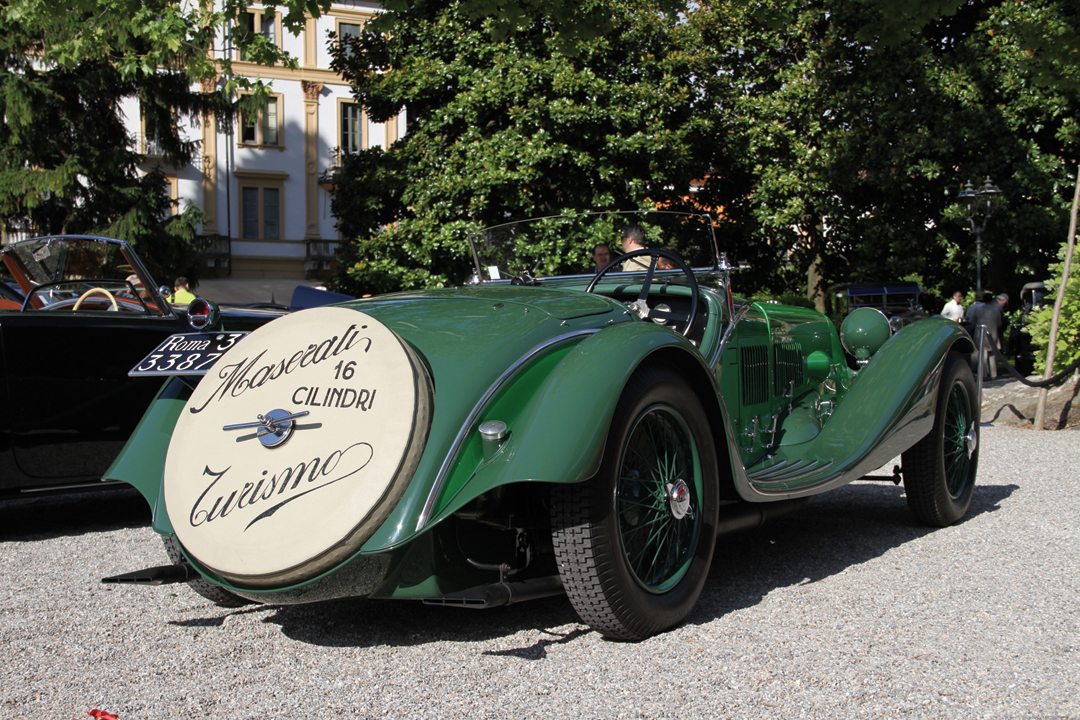
Today, the sole remaining V4—and the first Maserati to be bodied by Zagato—is part of American collector Laurence Auriana’s stable and was just displayed at this year’s Villa D’Este Concours d’Elegance.
 1933 4CS-1100, body by “Brianza”
1933 4CS-1100, body by “Brianza”
In 1931, Maserati built its first 4-cylinder car, the 4CTR-1100, ostensibly for the smaller displacement voiturette class of single-seaters that was popular with privateers of the time. In 1932, Maserati developed a lighter version (1,001-lbs) of this single-seater, the 4C-1100, and simultaneously began building a 4-cylinder, two-seater sports car version, known as the 4CS-1100. Of the 4CS sports cars, 11 examples would be built between 1932 and 1936, all powered by a supercharged, 1088-cc, DOHC, inline 4-cylinder engine that produced 105 bhp @ 5,500 rpm. The new 4CS enjoyed quite a bit of racing success, most notably class wins at the Mille Miglia in 1932, 1934, 1935 and 1936.
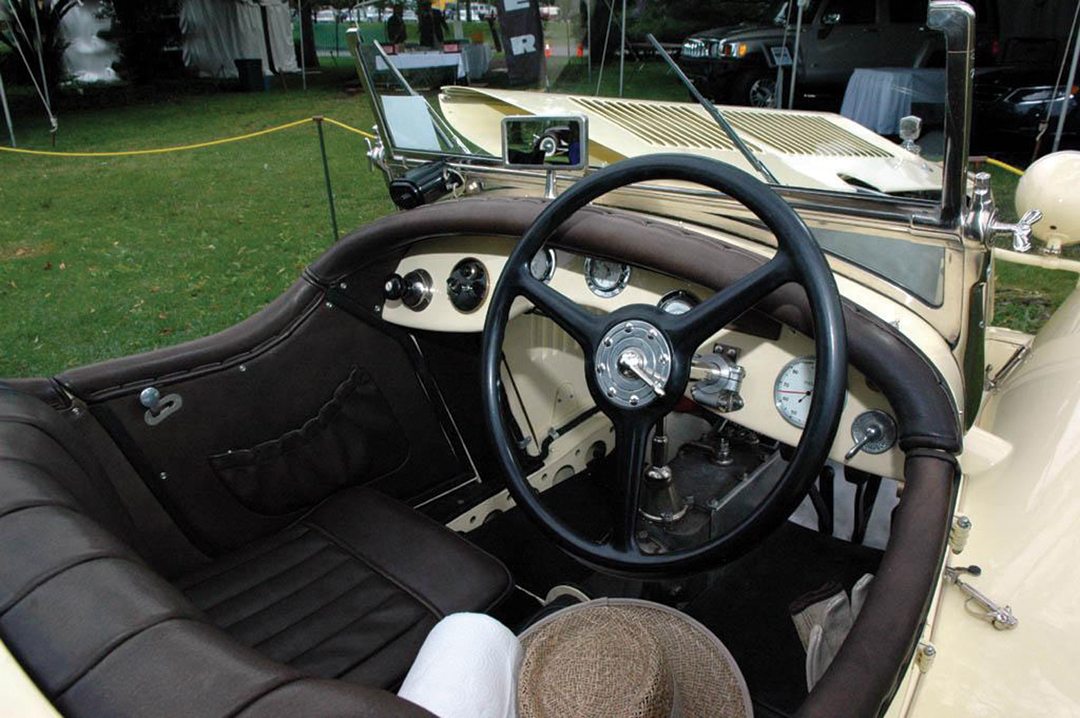
After this lone 4CS, received a road-going body, very reminiscent of those that Zagato/Brianza constructed for the famed Alfa Romeo 8C2300, the car was put on the display stand at the 1932 Milan Motor Show.

 1949 A6/1500 Panoramica
1949 A6/1500 Panoramica
In 1937, the surviving Maserati brothers (Ernesto, Bindo and Ettore) sold ownership of Maserati to Italian industrialist Adolfo Orsi. Orsi saw great potential in the brand, but felt the company had to expand its horizons beyond just racing cars and to begin to offer road-going Maseratis, as well. As early as 1941, Maserati, under the technical direction of Ernesto (who, along with his brothers, had signed a 10-year employment contract with Orsi) began laying down the preliminary design work for a 6-cylinder road car.
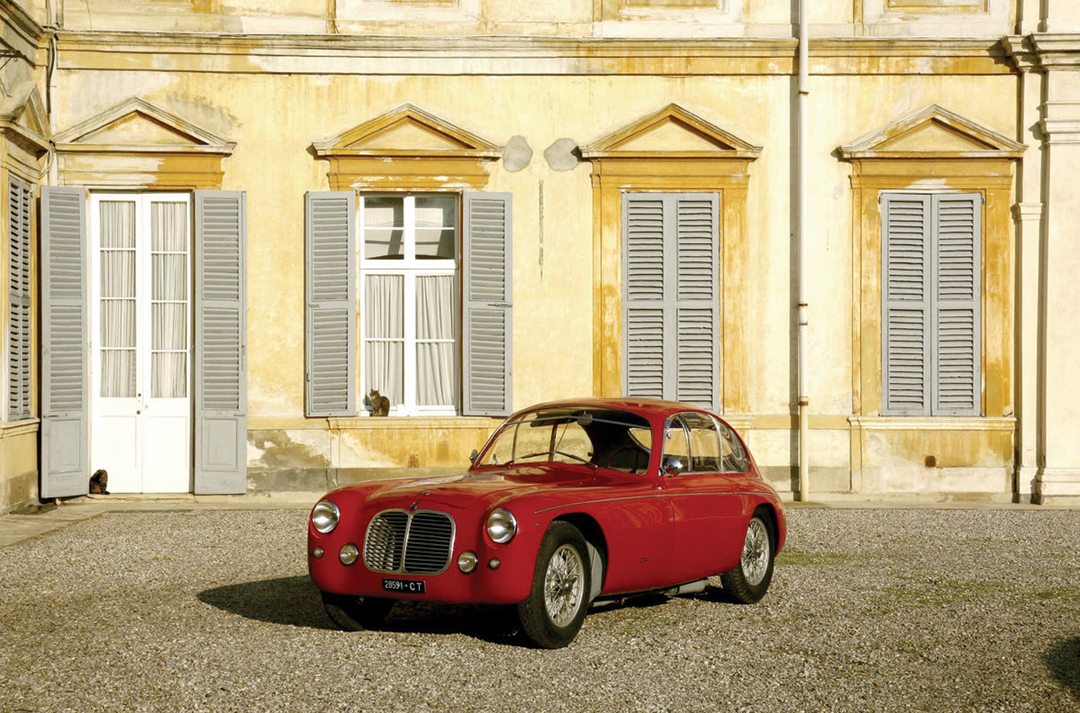
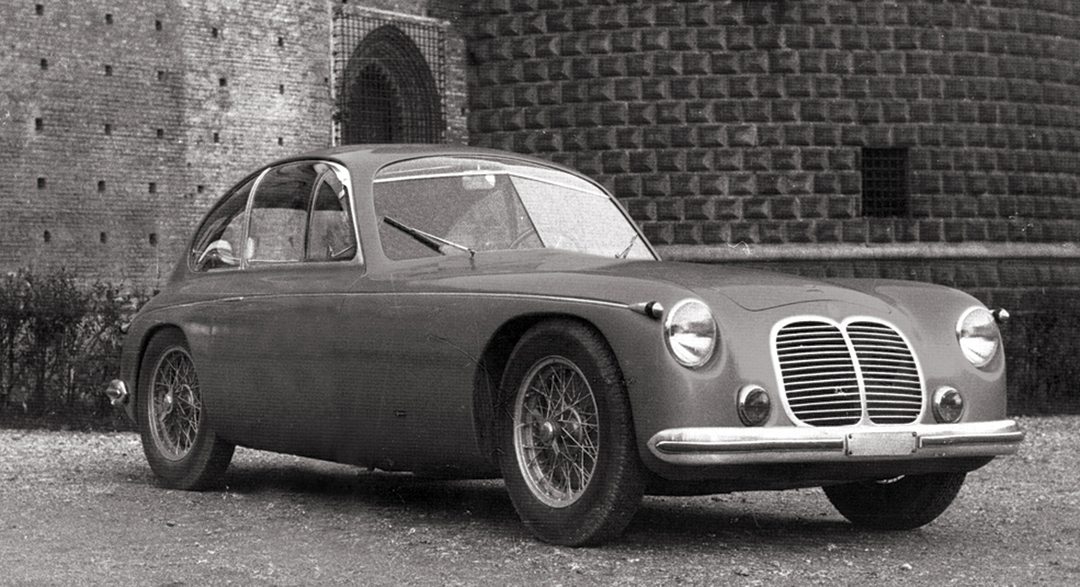
 1954 A6G/2000 Spider
1954 A6G/2000 Spider
While Maserati’s A6 road car was enthusiastically welcomed in the late 1940s, by 1951 it was clear that the small 1500-cc engine was going to need more power if it was going to keep up with the GT offerings of Ferrari and others. So, in 1951, Maserati debuted its new A6G/2000, with a 2-liter SOHC engine. The following year, after famed engine designer Gioachino Colombo joined the company, a twin-cam version was also offered. While these early cars served as dual-purpose road and race machines, it wasn’t until 1954 that the introduction of a true, road-going GT was offered.
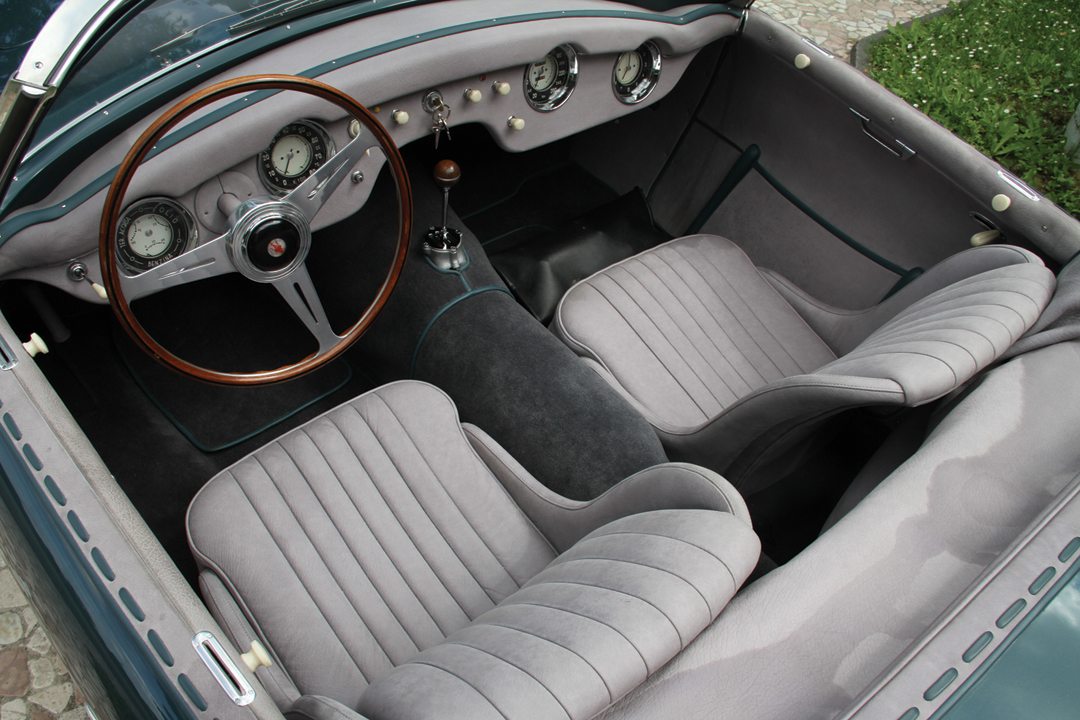
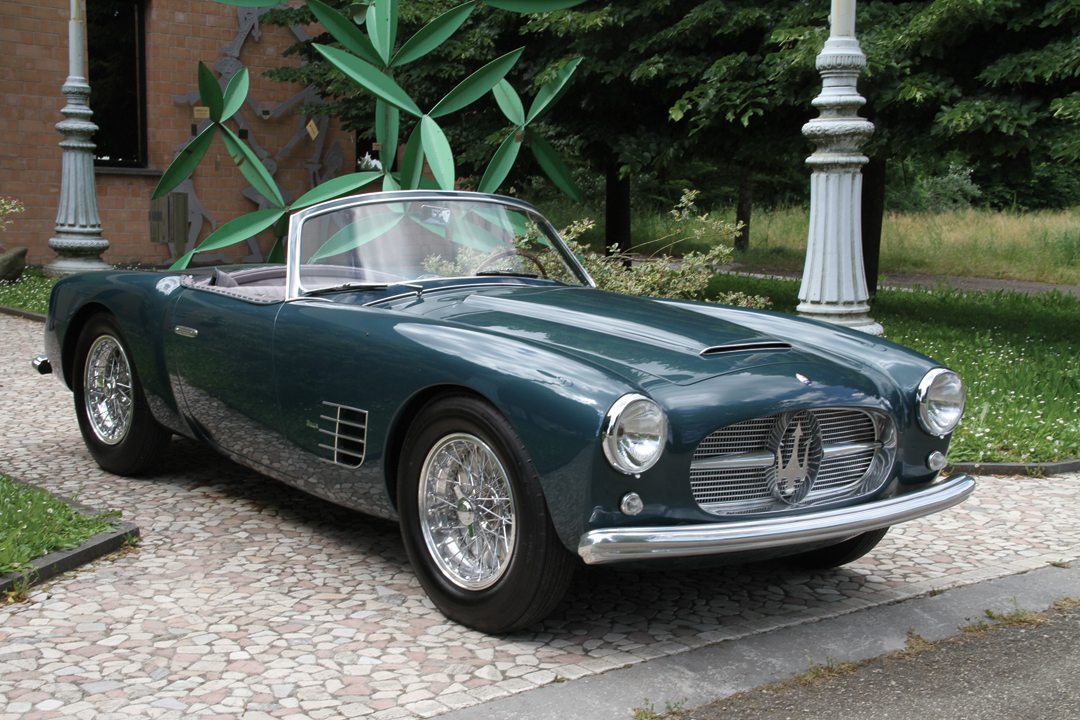
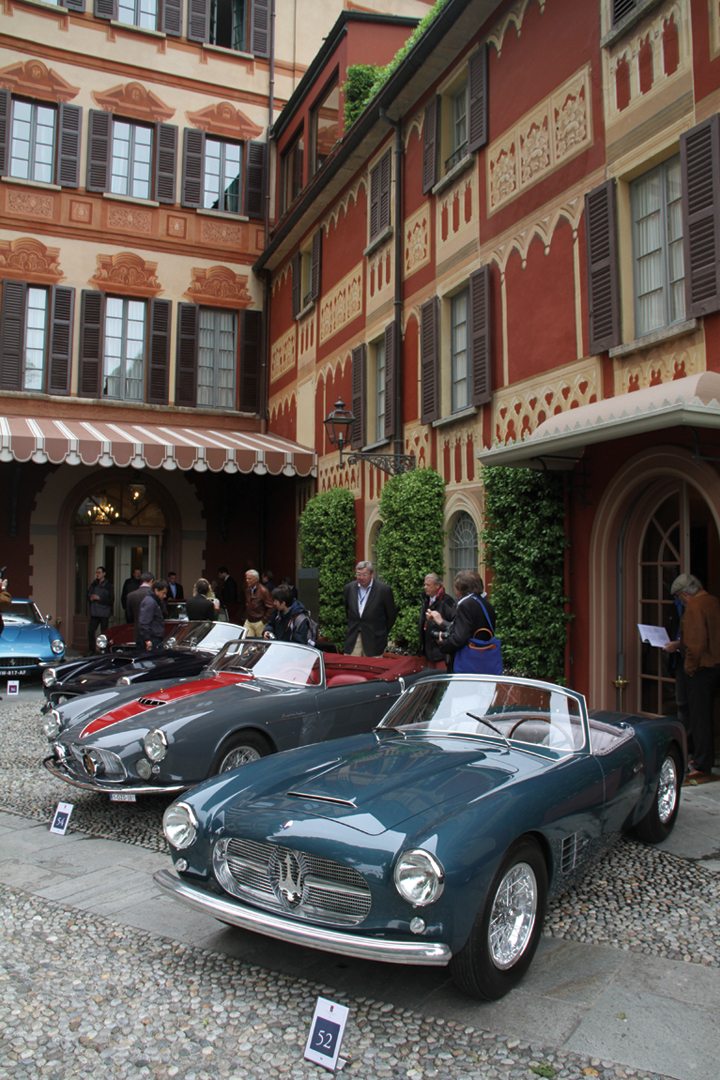
Today, the sole A6G/2000 Zagato Spider is owned by Brandon Wang.
 1955 A6G/2000 Berlinetta
1955 A6G/2000 Berlinetta
The second A6G/2000 chassis (#2102) was sent to Zagato on December 1, 1954. There it received an aluminum Berlinetta body, and thus would become the first of what would be 21 Zagato-bodied A6G/2000s. According to expert Walter Bäumer, no two were identical and the total run of Zagato-bodied Berlinettas can de divided into three series based on subtle design evolutions over the two years of production.
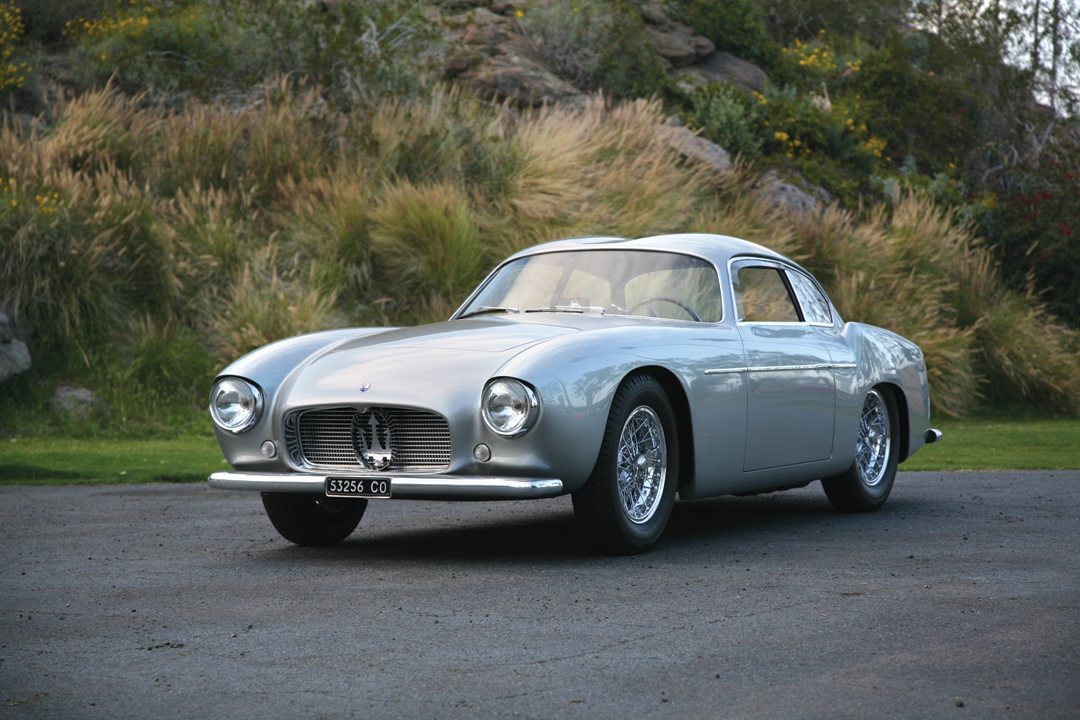
Series 2 cars featured smaller, rounder grills, curved rear fenders, vertical air outlets in the front fenders, front and rear bumperettes and a rounded dashboard with smaller main gauges.
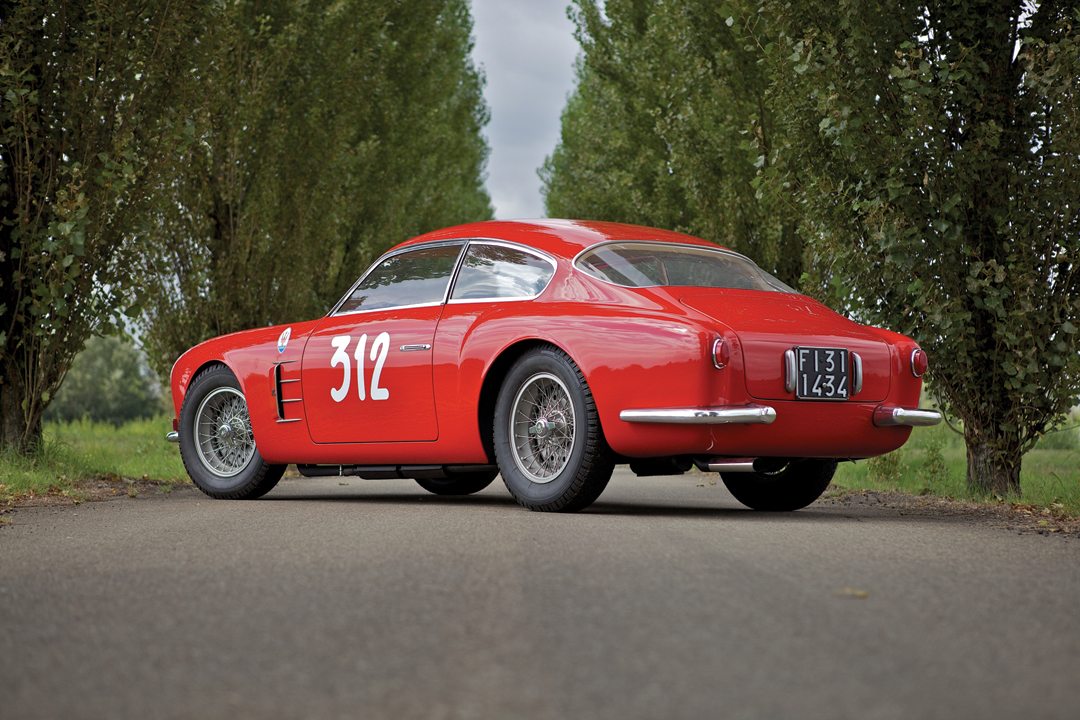
Series 3 cars brought a return to larger grills, curved rear fenders, two separate air inlets on the hood and much of the other changes seen on the Series 2 cars. And, just to underscore the uniqueness of each example, three chassis (2112, 2113 & 2118/2189) are classified as Interim Series, because each bridges some, but not all, of the changes between the Series 1 and Series 2 cars.
While the A6G/2000 was intended to be a road-going GT car, they were inevitably raced in a number of events by privateers including many races in Italy like the Mille Miglia and the Coppa Intereuropa. Of all the Zagato-bodied Maseratis, it is these cars that have become the most highly revered and thus the most sought-after.
 1957 450S Berlinetta “Le Monstre”
1957 450S Berlinetta “Le Monstre”
As early as 1954, Maserati began toying with the idea of building a large-displacement V8 engine to combat the ever-escalating power wars that were building in international sports car racing. With encouragement—and money—from American privateer Tony Parravano, Maserati engineer Giulio Alfieri and his team had a prototype 4.5-liter power plant producing 400-hp by the middle of 1956.
With increasing pressure from the likes of cross-town rival Ferrari and the Jaguar D-Type, Maserati designed and built a new sports racer for the 1957 season that was to supersede the highly successful 300S. Using the new 4.5-liter V8, in an updated and strengthened version of the 300S chassis, the 450S was born. With a driving team that included Juan Manuel Fangio and Stirling Moss, the prospects for Maserati looked very good.

Costin—noted for his streamlined Vanwall and Lotus Eleven designs—penned a new enclosed body for the open racer that included a fastback tail and fully enclosed undertray. However, with little time for Maserati’s in-house carrozzeria (led by Medardo Fantuzzi) to construct it, a rolling chassis (#4501) was sent to Zagato, with the directive that they had to have the project completed in just two weeks. Looking back on the result, Moss recalls, “I think there was very little wrong with the design Costin produced for Maserati, but it was just diabolically badly made in a typically Italian last-minute panic. They met their target date, but cut so many corners to do so that when the car arrived at Le Mans I could not believe the number of vital features omitted or fouled up. One omission for example, was the full length undertrray which Frank had specified in his original design!”
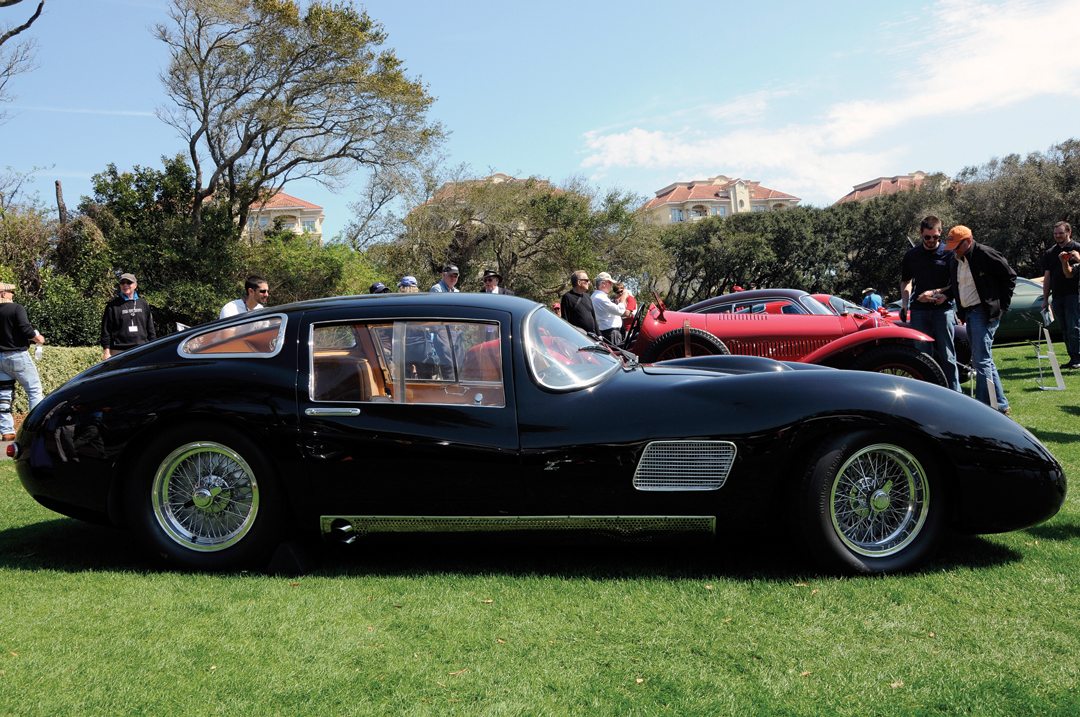
Dubbed Le Monstre, “The Monster” by the French press, the Zagato-built coupe proved to be unbearably hot and significantly slower than its open-topped siblings. Later analysis suggests that one of the many problems may have been that hot air from the radiators was routed through the carburetors, thus sapping much of the big 4.5-liter V8’s horsepower advantage! Despite all the problems and shortcomings, Moss and his co-driver Harry Schell were able to manhandle Le Monstre as high as 2nd place, but first a loosened oil pipe and then a seized universal joint brought the duo’s saga to a premature close. Moss summed up the failed experiment this way: “In the final reckoning, the 4.5 coupe was more Zagato than Costin, and the poor quality of Zagato’s work against the clock, combined with the Maserati 4.5’s usual shortcomings, was more than we could stand…I have no regrets about never having driven that car again.”
Indeed no one raced the coupe again, as after it was returned to the works, the Zagato body was unceremoniously peeled off and thrown onto a scrap heap. And there it sat, until 1958, when an American collector touring through the factory spotted the body and commissioned Maserati to build him a road-going 450S, combining chassis #4512, with the discarded Zagato body.
Le Monstre is currently owned by collector Alfredo Brener, and was seen at this year’s Amelia Island Concours.
 1984 Biturbo Spyder
1984 Biturbo Spyder
Whether the debacle with the 450S Le Monstre was to blame, no one knows, but Maserati would not turn to Zagato again for styling or construction for another 27 years. In that intervening time, Maserati’s fortunes would continually peak and falter. By 1968, Adolfo Orsi sold Maserati to Citroën, where briefly both companies benefitted from the Franco-Italian synergy. But the fuel crisis of the early ’70s put a tremendous amount of strain on both companies, resulting in Maserati being sold to Alejandro de Tomaso, in 1976. De Tomaso saw the road to Maserati’s salvation paved with more affordable sports cars that could be sold in higher volume.
In 1981, Maserati introduced the Biturbo, a smallish 4-seater powered by a twin-turbo-charged, 2-liter V-6, based on the architecture of the engine found in the earlier Merak. Though not in keeping with the public’s perception of Maserati as a high-end, exclusive manufacturer, initial sales of the Biturbo were encouraging.
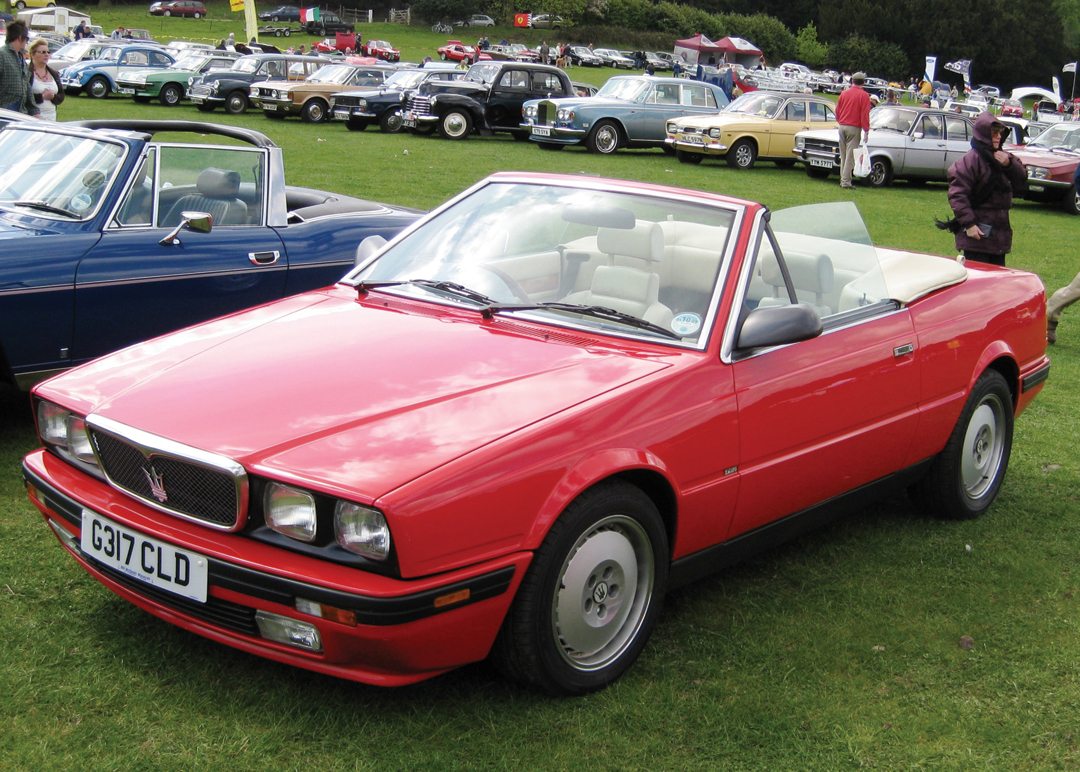
While the Biturbo has generally been panned—and was even named to a listing of the 50 worst cars of all time—over its 10-year production life, 3,793 examples of the Maserati Spyder were produced, making it the most abundant Maserati spider of all time. Noted owners of the Maserati Spyder include Formula One Champion Alain Prost and singer Sir Elton John.
 1988 Karif
1988 Karif
In 1988, Maserati and Zagato created a rigid, hardtop version of the Biturbo Spyder, called the Karif (also marking a return to Maserati’s earlier use of names of winds in its nomenclature system). Essentially, little difference existed between the Karif and the Spyder, other than the hardtop itself. Between 1988 and 1993, 222 examples were built.
 2007 GS Zagato
2007 GS Zagato
In 2007, Italian designer and furnishings magnate Paolo Boffi commissioned Zagato to design and construct for him a bespoke Maserati, based on the then-current Grand Sport platform.
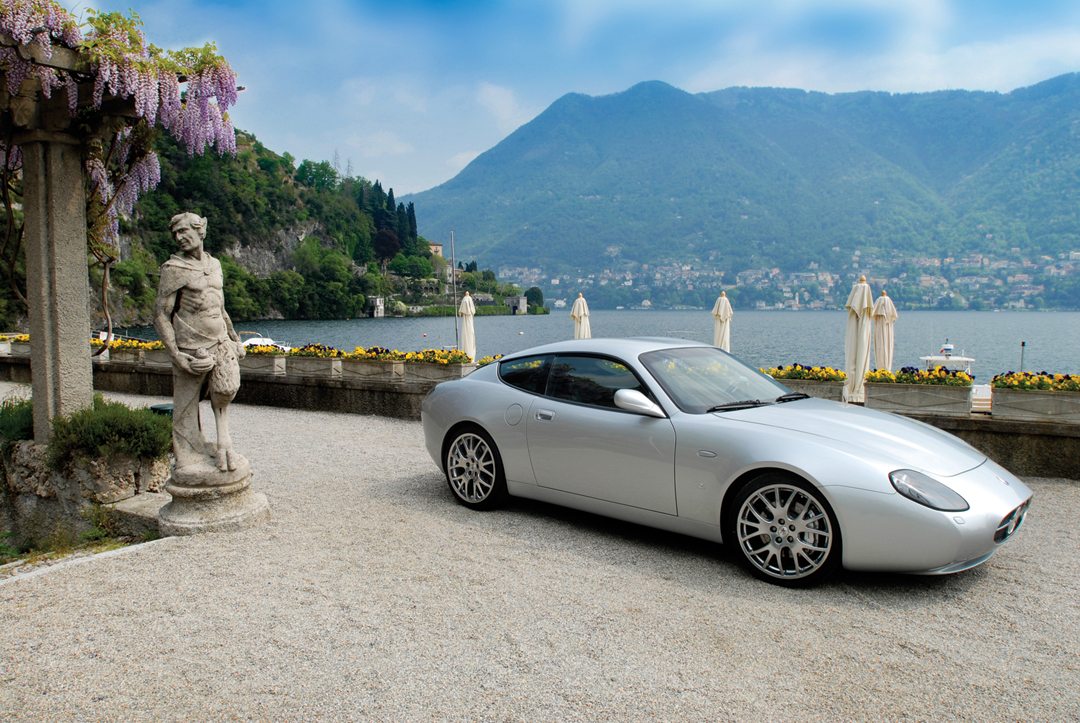
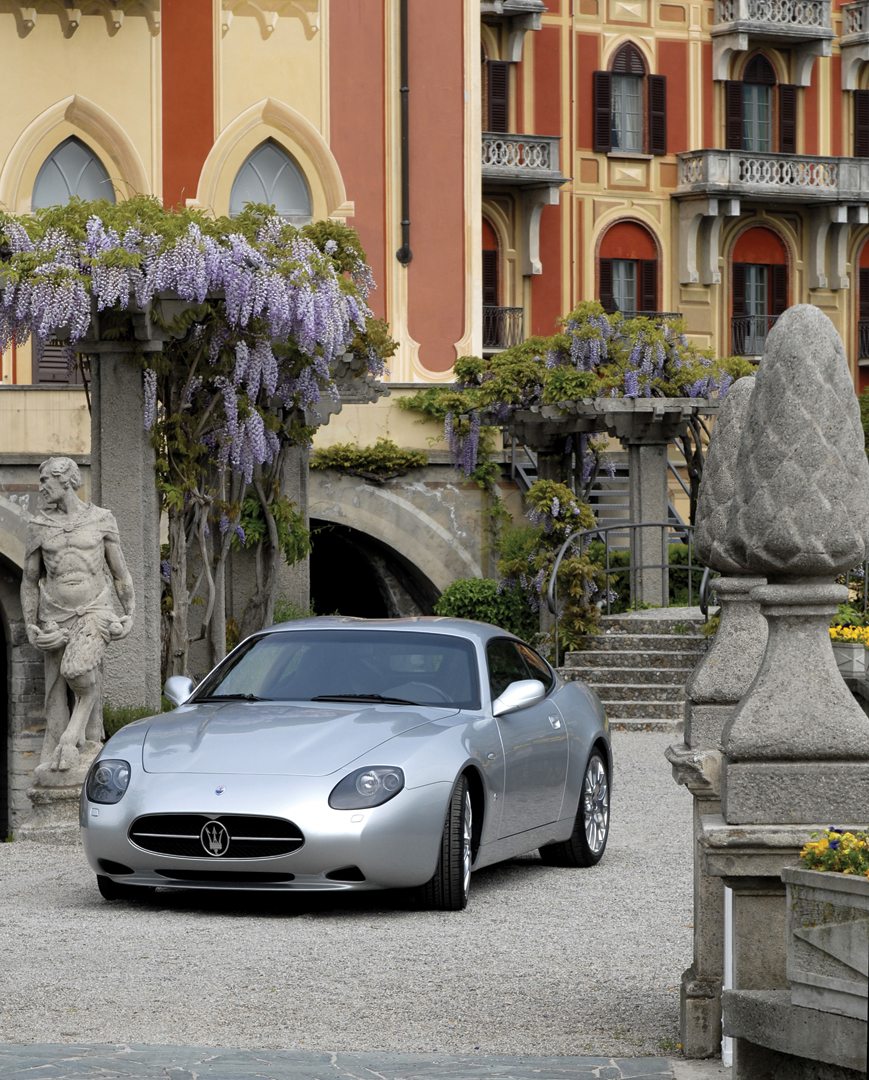
The completed project was debuted at the 2007 Villa d’Este Concours.
Maserati e Zagato



